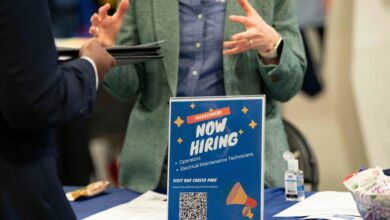Trump Administration Halts Student Debt Collections for Social Security Recipients

The Trump administration has announced a temporary pause on enforcing harsh consequences for older adults who are behind on their student loan payments.
The Education Department will halt plans to offset the benefits of Social Security recipients who have defaulted on their federal student loans, as stated by spokeswoman Ellen Keast on Tuesday.
Keast emphasized the administration’s commitment to safeguarding Social Security recipients who rely on fixed incomes.
This decision marks a departure from the administration’s previous intentions earlier in the year to resume collections for defaulted borrowers, including wage garnishment and offsets from federal payments like tax refunds and Social Security checks. However, only collections from Social Security recipients are currently paused, with other collections activities continuing as usual.
According to a report from the Consumer Financial Protection Bureau (CFPB) in January, as many as 452,000 Social Security recipients who have defaulted on federal student loans could potentially face benefit garnishment when the department resumes collections from older borrowers in default.
Defaulted borrowers, who are at least 270 days behind on their federal student loan payments, typically face severe financial consequences. While penalties were suspended at the onset of the pandemic, many borrowers still struggled to get out of default status during the subsequent phases of the crisis.
Notably, the number of older Americans with student debt has surged by 60% since 2017, making retirees more vulnerable to losing Social Security benefits through garnishment. This increase in garnishment has raised concerns among Democratic lawmakers, who highlighted the issue in a letter sent in March 2024.
The CFPB report revealed that the number of Social Security beneficiaries experiencing reduced benefits due to forced collections rose from around 6,200 in 2001 to 192,300 in 2019. During this period, the amount garnished increased from $16.2 million to $429.7 million.
While there are limits on the amount that can be garnished from an individual’s Social Security benefits, the protected amount ($750 per month) has not been adjusted for almost three decades, falling well below the poverty line income level.
The majority of funds collected by the Department of Education through garnishment have been allocated to interest and fees rather than reducing the borrowers’ principal debt amount, further exacerbating the financial burden on affected individuals.
The Department of Education is yet to specify a precise timeline for resuming collections from this group, mentioning on their website that they plan to delay offsets of monthly benefits for a few months before resuming operations sometime in the summer.
How to Avoid Social Security Garnishment for Student Loan Debt
Borrowers who are facing payment difficulties but have not defaulted on their loans can seek relief through income-driven repayment plans, forbearance, or deferment to prevent involuntary collections. However, these options are not available to borrowers already in default.
For borrowers in default, the Department of Education offers resources on how to arrange repayment plans, with loan rehabilitation agreements serving as a potential solution to avoid garnishment by making nine timely payments.
The department will initiate proactive outreach to recipients to provide information on affordable repayment options and help them regain good standing.
Additionally, the CFPB report suggests that many Social Security beneficiaries with defaulted loans may be eligible for suspending or reducing forced collections due to financial hardship, while some may qualify for loan discharge due to disability.
More from Money:
Best Long-Term Care Insurance Companies of 2024
Social Security Recipients Could See Checks Garnished if They’re Behind on Student Loans
Have Medical Debt? Your Credit Score Could Increase Under New Policy





